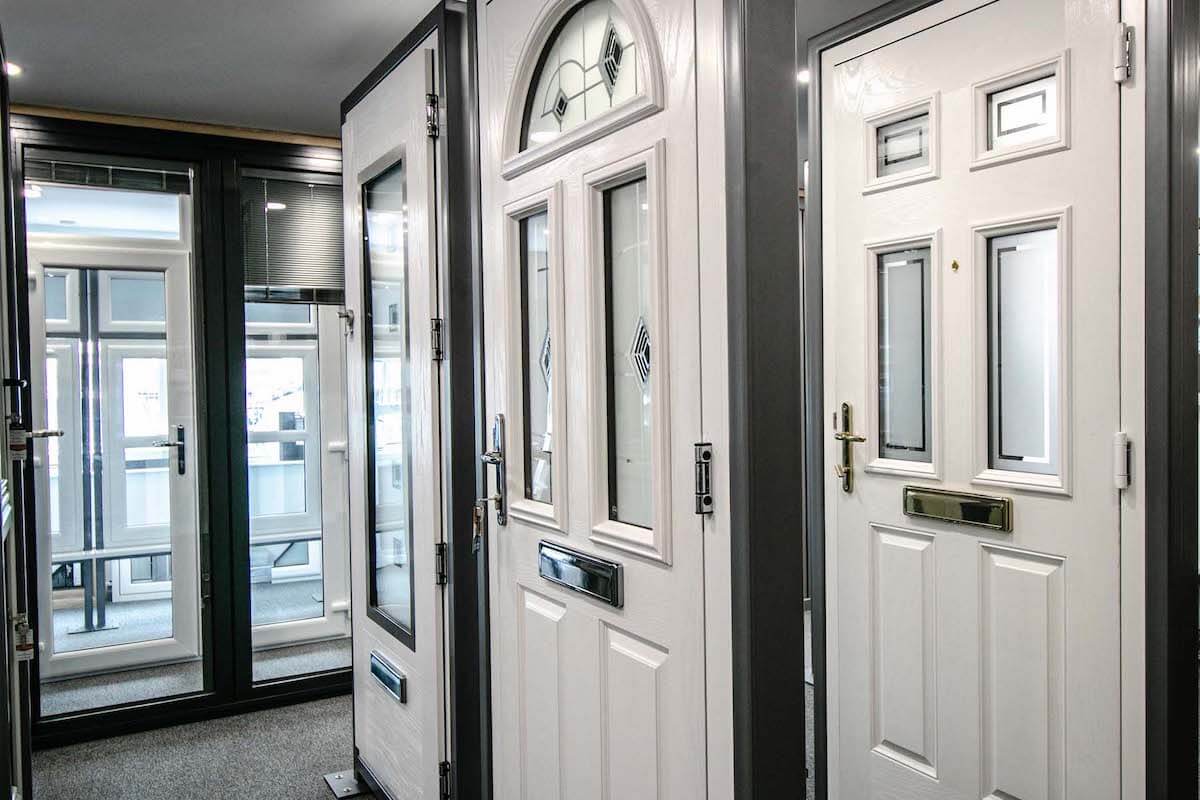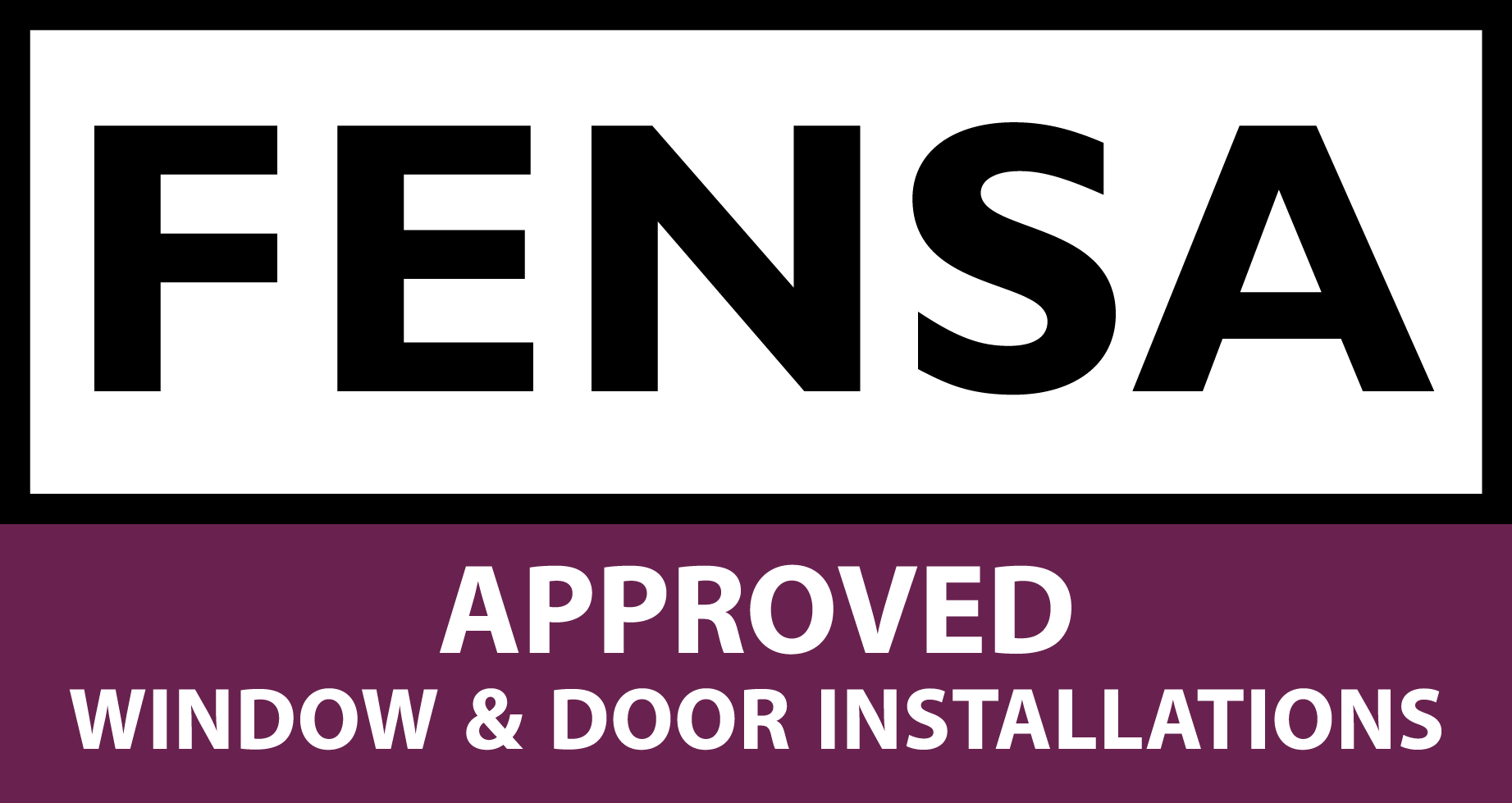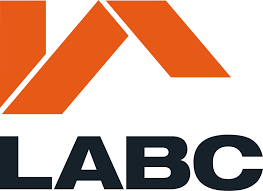What Are The Different Types Of Conservatory?
- 12 May 2023
- News
Dating back as far as the 19th century, enhancing living space through a conservatory has remained one of the most popular home renovations for decades. However, not only is a conservatory a significant investment, but it will also completely alter the appearance of your property, which means that choosing the right style is imperative. This isn’t a decision that you should attempt to make overnight as several factors will need to be considered, such as your budget, as well as whether your property is modern or traditional.
With this in mind, having specialised in conservatories in Aylesbury and the local surrounding areas for many years, our team have helped hundreds of clients to narrow down the different types of conservatory available to determine which is best suited to their home. We have compiled this knowledge into an easy-to-follow guide, helping you to begin shortlisting your options!
Our Guide On The Most Popular Types Of Conservatory
Whether you are replacing your existing space or are putting together a new design from scratch, building a conservatory is a home upgrade that is guaranteed to come alongside a wealth of benefits. Not only can a conservatory add up to 15% to the value of your property, but it is also considerably more affordable than a home extension while still providing ample living space. This means that although it will require an initial investment, you will most definitely enjoy a return for many years to come, providing that you choose your conservatory type and materials carefully. To ensure this, we recommend asking yourself the following questions, which we will take a closer look at throughout our guide:
- What Should You Consider Before Building A Conservatory?
- What Is The Difference Between A Conservatory And Orangery?
- What Are The Different Conservatory Types?
- What Are The Types Of Conservatory Materials?
- What Are The Conservatory Roof Types?
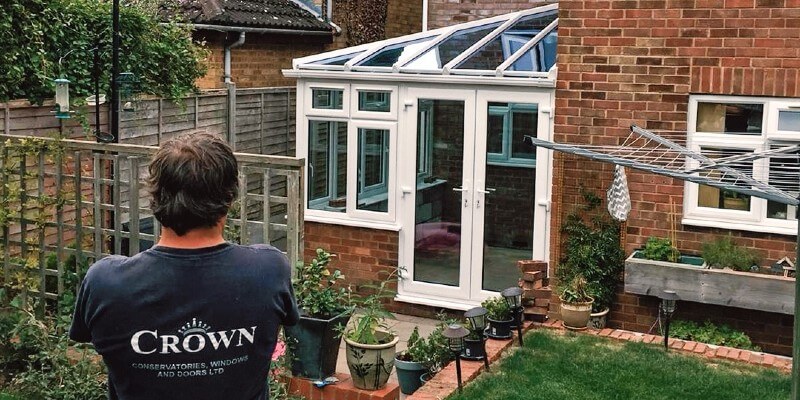
What Should You Consider Before Building A Conservatory?
Before delving deeper into the different types of conservatories available, it is essential to consider the key factors that will impact whether your home is suited to this upgrade. Together, these will help you to begin shortlisting what styles you like the most, as well as those that will be able to fulfil your requirements. Start your research by thinking about the following:
The Use Of The Conservatory
Spending time determining how you would like to use your conservatory once it is finished will help to narrow down the qualities you will look for in styles. For instance, if you would like a space where you can enjoy the summer weather without becoming too warm, then you may want to consider styles that feature a temperature-controlled roof, as opposed to opting for a fully glazed conservatory. For those who plan to convert their new space into a home office or playroom, on the other hand, privacy will be essential, so again, you may not incorporate as much glazing as a traditional conservatory would have.
Keep in mind that while you will have to choose a particular conservatory style, it can be altered to fit your vision. Many aspects, from the roof to the glazing, can be tailored to meet your requirements; you will just need to ensure that you make these clear during the initial design process. If you’re stuck for inspiration, then take a look at Ideal Home for different ideas on how you can use your conservatory.
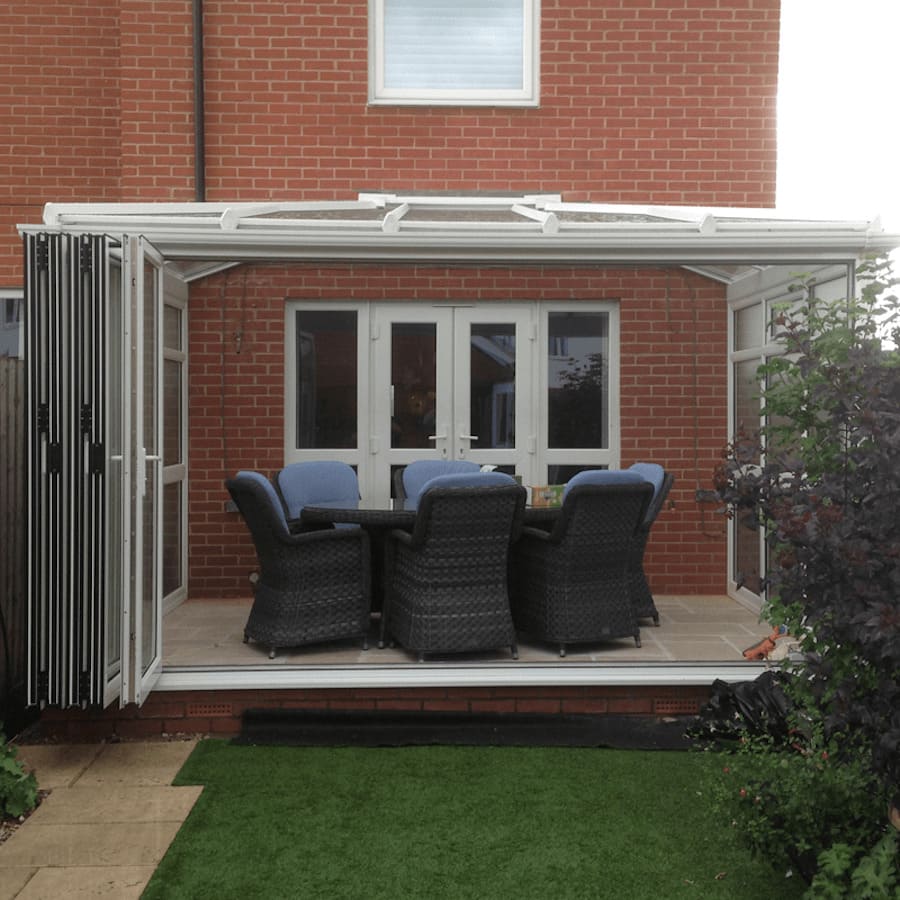
Where Your Conservatory Will Be Located
Many homeowners are surprised to find that the position of their conservatory will have an impact on the type of flooring, heating and ventilation they will need to incorporate. Typically, any conservatory that is built north-facing will remain at a cooler temperature as it is not exposed to as much sunlight as those located on the south. This means that south-facing conservatories, on the other hand, will need to be designed with additional features to prevent the room from overheating.
Regardless of where your conservatory is positioned, double glazing should always be installed to allow you to maintain a steady temperature. The added layer of glazing means that not only will your conservatory remain cool in the summer but also cosy and warm during the colder months. Here at Crown Windows, all of our conservatories are designed with our high-quality double glazing in Aylesbury, which is also available in all of the other areas we cover, ensuring that clients can enjoy their new space all year round.
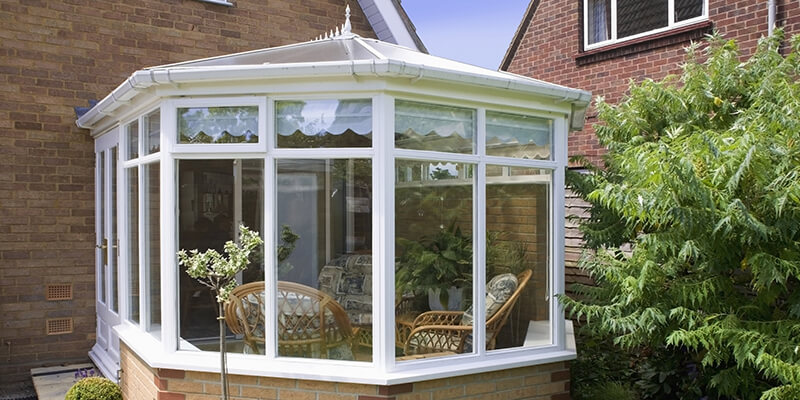
Whether You Need Planning Permission
When making any significant upgrade to your property, it is vital to check whether you need to apply for planning permission. For most conservatories, the project will fall under permitted development, which means that you already have the right to go ahead with the build, providing that it meets the outlined criteria. These rules cover points such as the height of the conservatory, along with how much land it covers. A full list of regulations you must consider when planning a conservatory can be found on Planning Portal.
If your proposed conservatory designs do not meet the permitted development guidelines, then you will need to apply for planning permission, which usually comes alongside a fee. This involves completing several pieces of paperwork before sending them off for approval. If your project is accepted, then you can go ahead with works; however, if it isn’t, unfortunately, the only solution will be to amend your designs so that they fit with the original rules.
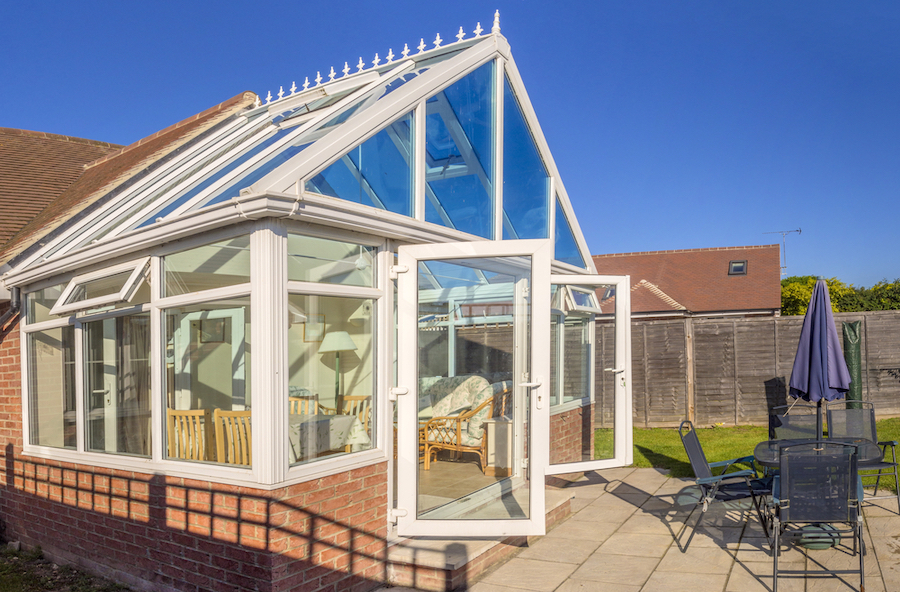
What Materials You Plan To Use
Another aspect that you will need to consider is the material you plan to use, as these will differ based on the above factors. For example, if you want to create a more private space that feels more like an extension of your home than a conservatory, your design should maximise brickwork and include a fully tiled roof. Whereas, for those who adore the traditional aesthetic, a glazed space would be a sought-after option. In this instance, you will then need to determine what glazing type is best, whether this may be thermally efficient glass or those with a slight tint to prevent glare.
Along with roofing and walls, it will also prove beneficial to research the window frame and door materials. Over our many years of experience installing conservatories, we have noticed a significant increase in the use of uPVC. uPVC is not only reliable and durable, but it will also remain in perfect condition with little need for maintenance. For this reason, we supply and fit uPVC conservatories, doors and windows in Aylesbury and the surrounding areas, allowing our clients to take advantage of this long-lasting solution. For more details on the benefits of uPVC windows and doors, take a look at Windsulation.
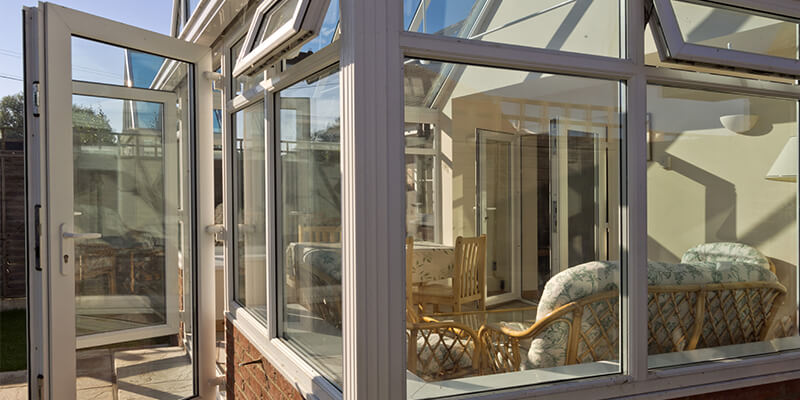
What Is The Difference Between A Conservatory And Orangery?
When planning a conservatory, a question that we are often asked by clients is how the design differs from an orangery. This is a factor that you should most definitely consider before scheduling your project, as it may mean that your requirements are better suited to an extension as opposed to a conservatory.
The difference between the two is relatively straightforward; a conservatory is primarily glass with glazing covering more than 50% of the walls and 75% of the roof at a minimum. An orangery, on the other hand, is designed as a brickwork structure with large windows and a roof with less than 50% glazing. They combine features of both a conservatory and a small extension, often with a roof lantern instead of a fully glazed roof. Spending time researching the two and comparing examples will help you to determine which option you plan to go ahead with.
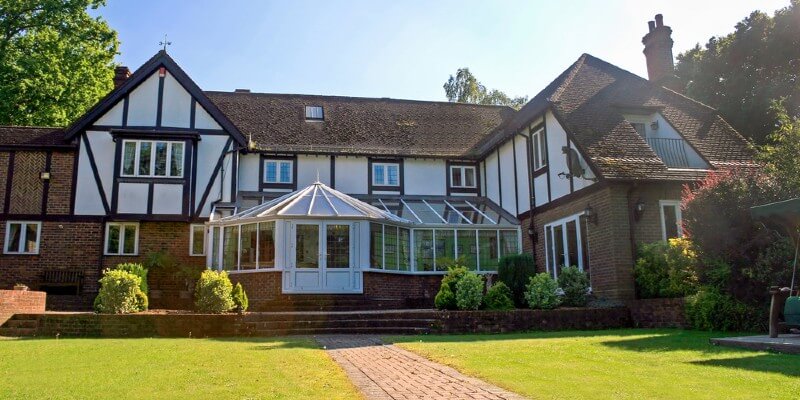
What Are The Different Conservatory Types?
Once you are confident that a conservatory is the best route for you, it’s time to begin shortlisting styles that fit your vision. Luckily, there are now a number of different conservatory types, each of which boasts different features. The most popular amongst our clients include the following:
Victorian Conservatory
For those who are hoping to stick with the most traditional conservatory style, a Victorian design would be the best-fitting route. Designed to encapsulate the ornate architecture of the Victorian age, this conservatory type features multi-faceted walls and a high roof, complete with decorative touches. As the majority of the build is glazed, a Victorian conservatory allows you to maximise natural light, enjoying a full view of the outdoors. This is ideal for families who enjoy spending a lot of time in their garden during the warmer months, hosting BBQs and socialising with loved ones.
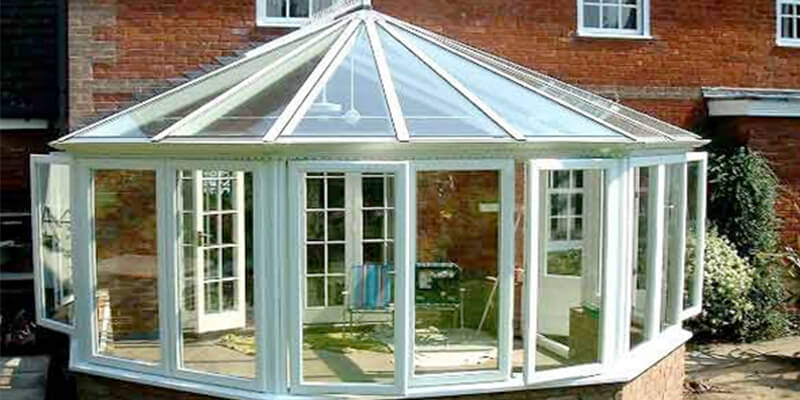
Edwardian Conservatory
With a super flexible design, an Edwardian conservatory can be transformed into a dining room, chill-out zone, playroom and much more. The appearance combines the traditional features of its Victorian alternative while incorporating a modern twist. As opposed to being designed with a bay-like appearance, the Edwardian is either rectangular or square in shape, allowing you to take advantage of enhanced living space. This also makes it much easier to decorate as you will not have to opt for custom-made furniture to fit with the unique shape of the room inside.
Much like Victorian conservatories, the roofing on a Georgian style is more decorative, meaning that the ridgeline is complete with horns, and designs often feature a row of small windows just below the ceiling.
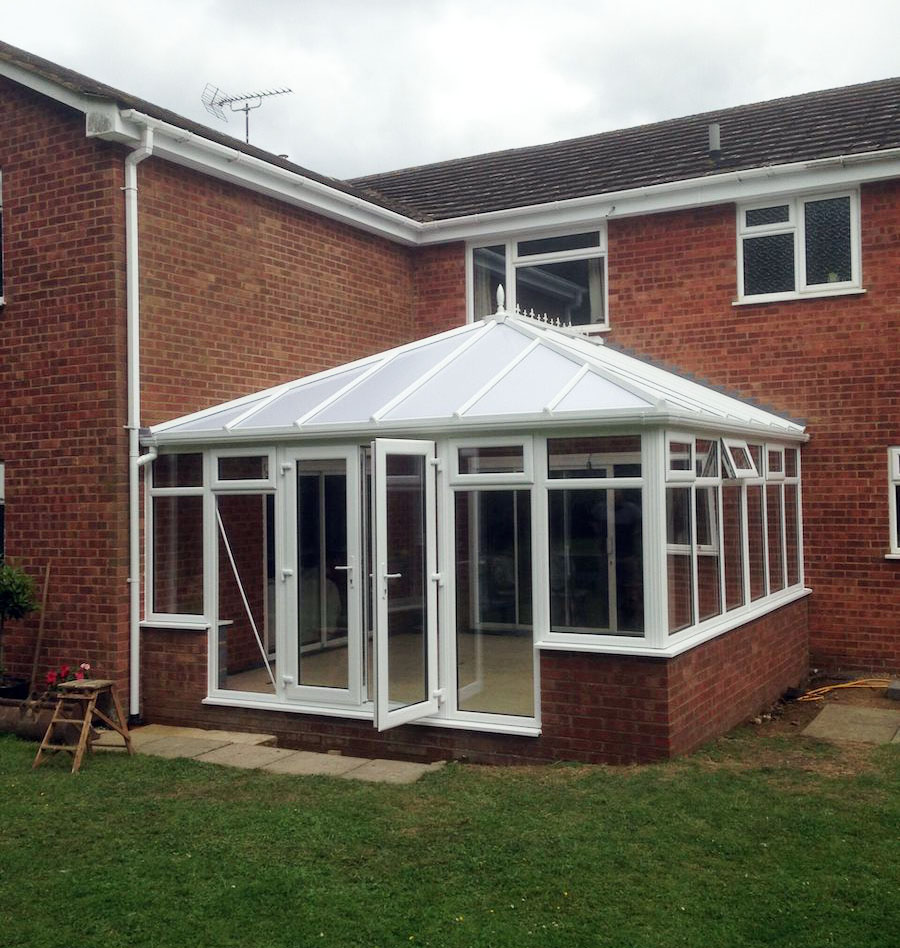
Gable Conservatory
Another style that links with the Georgian era is a gable conservatory, which is very similar in appearance to the design mentioned above, yet with a few slight differences. The biggest change in design is in the roof, which follows the same roofing style as your property, with two sloping sides that meet in the middle. The front of the roof stands upright yet is still equipped with glazing, allowing plenty of natural light to stream in.
As the roof of a gable conservatory is often taller than its alternatives, it remains a sought-after option for those who want to create the illusion of a larger space in a smaller conservatory. However, when opting for this style, we would highly recommend incorporating features that will limit glare, such as window films, to prevent the room from overheating.
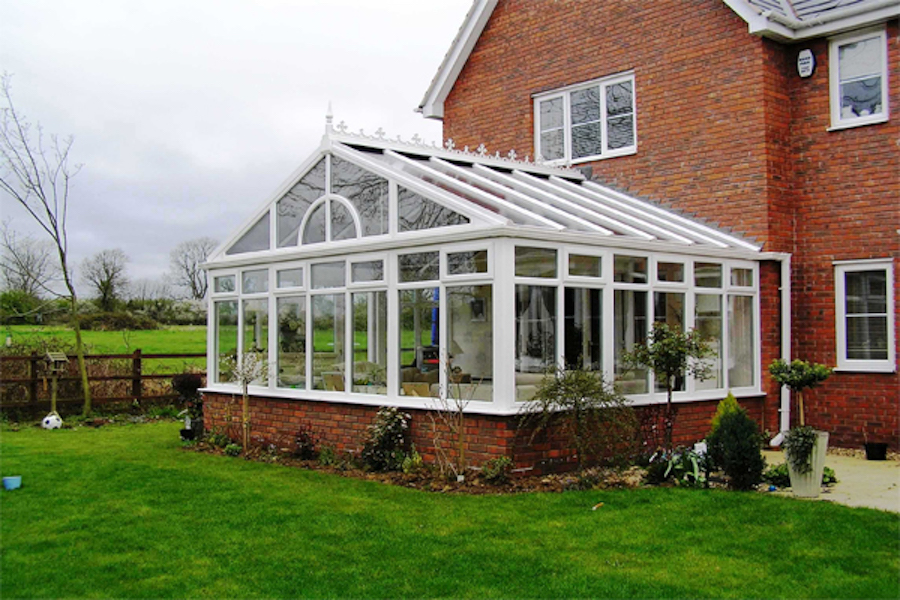
Lean-To Conservatory
A lean-to conservatory is an excellent option for those who prefer a more simplistic design and are less keen on the traditional style alternatives. They do not feature decorative roofing and multi-faceted walls but a straightforward box-like floor plan with clean lines. The roof is also straight and sloped as opposed to being a lantern shape, making them ideal for homes that may have additional height restrictions in place.
Due to the nature of a lean-to conservatory, they remain incredibly versatile, which means that the design can be altered to fit both large and smaller spaces. They can also be seamlessly slotted into more awkwardly shaped areas without making the appearance of the property exterior look cluttered.
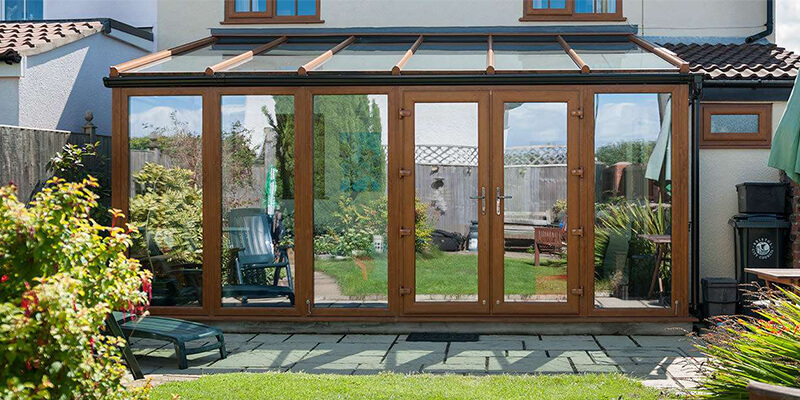
Combination Conservatory
In more recent years, we have seen a significant increase in the number of clients who opt for personalised combination conservatories. A combination conservatory is designed bespoke for you, taking your favourite features from several different conservatory types and blending them together. When choosing the combination route, it is important to keep in mind that the planning process will likely take a little extra time as a number of components will need to be considered. The design will be created from scratch, incorporating the materials and qualities you like the most.
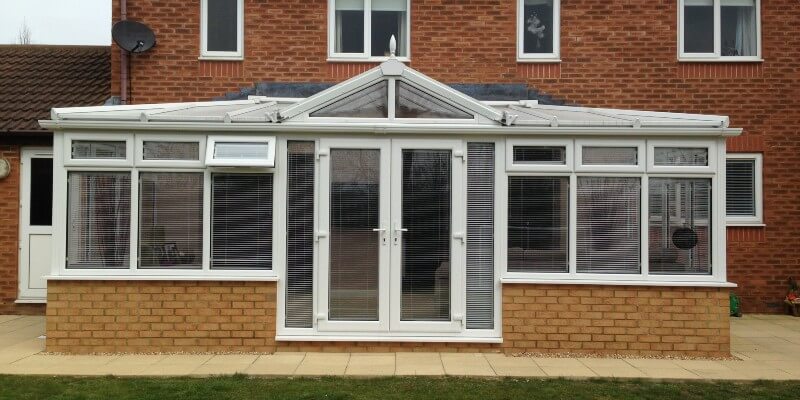
What Are The Types Of Conservatory Materials?
When planning to build or renovate a conservatory, choosing the right materials is crucial to ensure its durability, aesthetic appeal, and functionality. There are several types of materials commonly used in conservatory construction, each with its own advantages and considerations. Understanding these materials will help you make the right decision that aligns with your requirements, so let’s take a closer look at the three most common conservatory materials:
UPVC
UPVC is one of the most popular materials used in conservatory construction due to its wide range of benefits, including minimal maintenance, affordable costs and excellent durability. UPVC is resistant to decay, warping, and fading, making it a substantial, long-lasting option, and you can customise the look of your conservatory thanks to the various colour options available. Thanks to the minimal maintenance required, it is easy to keep them in good condition. Sounds great, right? Well, the only downside is that UPVC may not provide the same level of insulation as other materials, which can affect your energy efficiency.
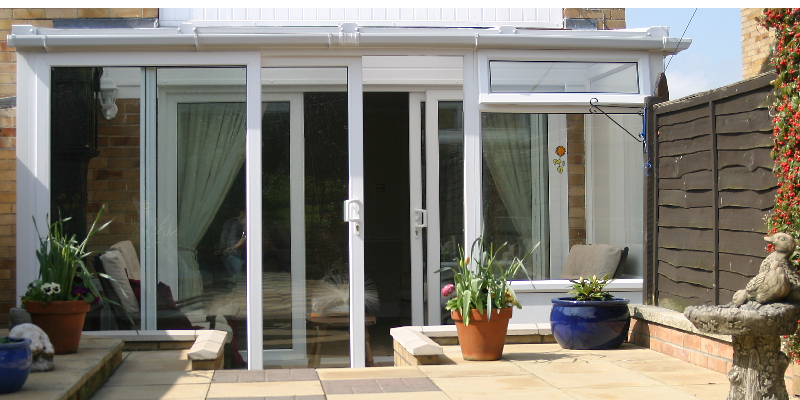
Aluminum
With the sleek and contemporary look that it offers and the slim profiles that maximise the amount of glass in the structure, aluminium is a lightweight and strong material used commonly in most modern conservatory designs. It is resistant to corrosion, ensuring longevity and requiring minimal maintenance, which is always a bonus! Aluminium conservatories offer excellent thermal performance when combined with energy-efficient glazing, helping to regulate temperature and reduce energy costs. The catch though – aluminium conservatories usually have a higher upfront cost compared to other materials, but when you consider the benefits, it is all worth it!
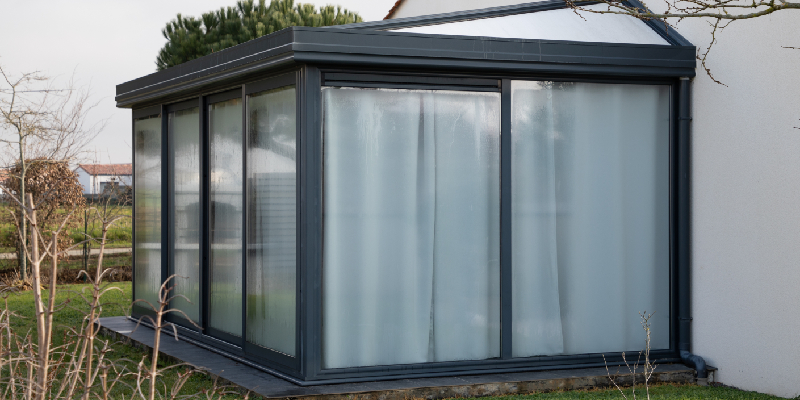
Timber
Timber conservatories provide a minimalistic and timeless aesthetic, and have the power of being able to add warmth and character to any home. It is a renewable material that offers amazing insulation features and can be easily customised and tailored to fit various architectural styles and design preferences, helping to create a comfortable living space.
Timber conservatories require regular upkeep to preserve their appearance and protect against rotting, moisture and pests, and painting or staining is needed every now and then to ensure their longevity and prevent weathering. While timber conservatories can cost more than other materials, they offer a unique charm and elegance that many homeowners find appealing.
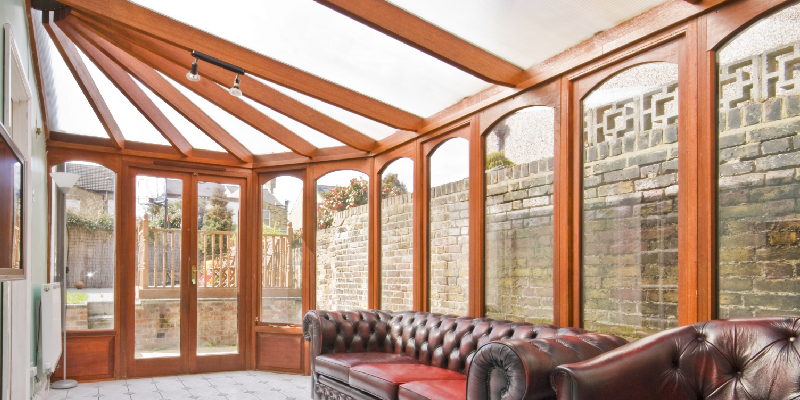
What Are The Conservatory Roof Types?
When it comes down to picking the right type of roof for your conservatory, there are four options, polycarbonate, glass, tiled and hybrid roofs. Each of these options has its own unique characteristics, advantages, and disadvantages. It is important to understand these roof types in-depth before making a decision, as it will allow you to choose a conservatory roof that meets your specific needs and complements your home.
The best type of conservatory roof for you will depend on your budget, your needs, and your personal preferences. If you are looking for a roof that offers excellent levels of natural light and energy efficiency, then a glass roof is your best option; but if you are looking for a more affordable option that is also durable and can withstand extreme weather conditions, then a polycarbonate roof is a good choice. Read on as we explore the different roof types for your conservatory:
Polycarbonate Roofs
Polycarbonate roofs are a popular choice for conservatories due to their affordability and versatility. These practical roofs are constructed using a lightweight and durable plastic material known as polycarbonate. One of the main advantages of polycarbonate roofs is their ability to effectively diffuse sunlight, reducing glare and providing a softer, more dimmed light inside of your conservatory. Available in various colours and thicknesses, polycarbonate roofs allow you to choose the level of light transmission and insulation that fits with your personal preferences. However, they may not offer the same level of thermal insulation as other roof types, which can result in temperature fluctuations and potentially higher energy costs. If this is the material that you end up going for, we recommend looking into ways you can make your conservatory warmer – this guide from our experts can help you out!
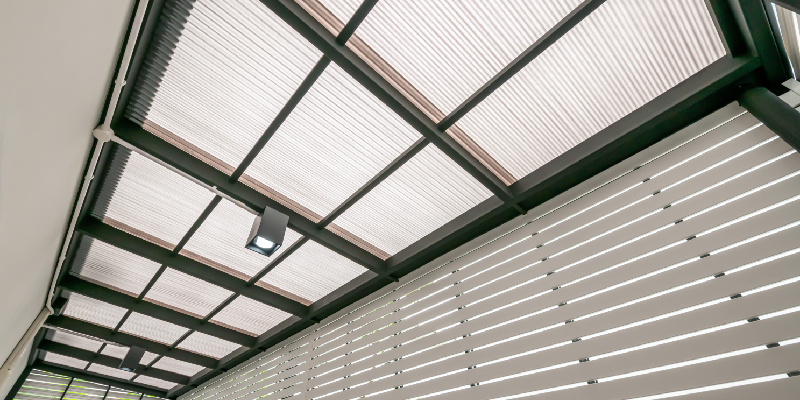
Glass Roofs
Glass roofs are renowned for their aesthetic appeal and ability to create a seamless connection between the conservatory and the surrounding outdoor environment; they provide excellent visibility, allowing for an abundance of natural light to flood the space and offering panoramic views of the sky. Glass roofs come in different options, including single glazing, double glazing, and even triple glazing for enhanced insulation! They provide superior thermal performance, reducing heat loss in colder months and potentially lowering heating costs – making them a very popular choice with the current rise in living expenses. However, glass roofs can also lead to excessive heat buildup during hot summer days if not properly designed with suitable solar control measures, and the transparency of glass roofs may require occasional cleaning and maintenance to keep them looking their best; bare this in mind when making your decision.
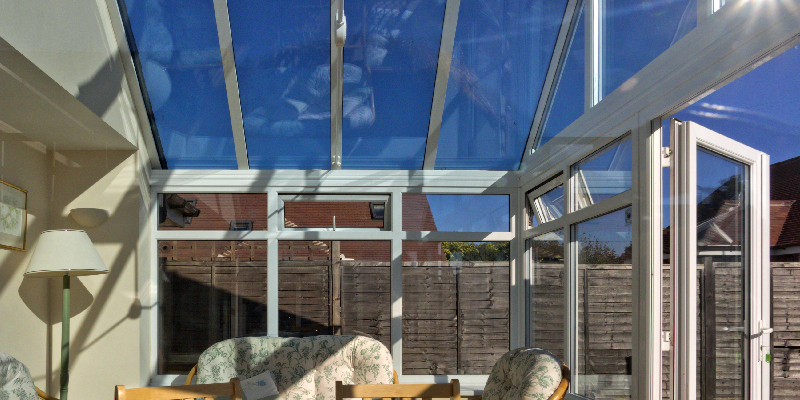
Tiled Roofs
Tiled roofs, also known as solid roofs, offer more of a substantial and traditional appearance for your conservatory. These roofs are constructed using lightweight tiles or slates, installed on a solid framework, providing excellent thermal insulation and creating a comfortable and energy-efficient space that can be used all year round. Offering enhanced soundproofing, tiled roofs reduce external noise such as heavy rain or hail and eliminate glare and excessive sunlight, making them an ideal choice for individuals who prefer a darker, more shaded environment. That being said, it’s important to note that adding a tiled roof to an existing conservatory may require additional structural modifications and building regulations compliance.
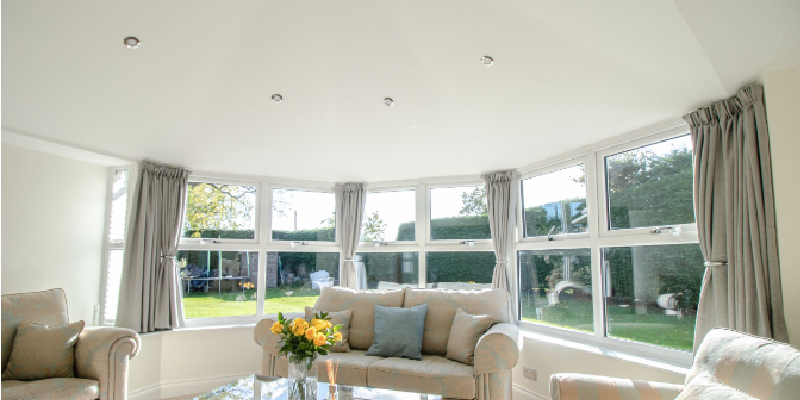
Hybrid Roofs
Hybrid roofs combine the best features of both glass and solid roofs, offering a versatile and adaptable option for those who can’t quite make up their minds. These roofs typically consist of a combination of glazed and solid sections, allowing you to customise the distribution of natural light and insulation based on your personal preferences!
Hybrid roofs provide a balance between brightness and shade, with the solid sections offering improved thermal efficiency while the glazed sections allow that much-needed natural light into your home. They are often designed with advanced thermal break technology and insulation materials to ensure energy efficiency. This type of roof can be an extremely cost-effective option as they provide the benefits of both glass and tiled roofs while minimising some of their drawbacks.
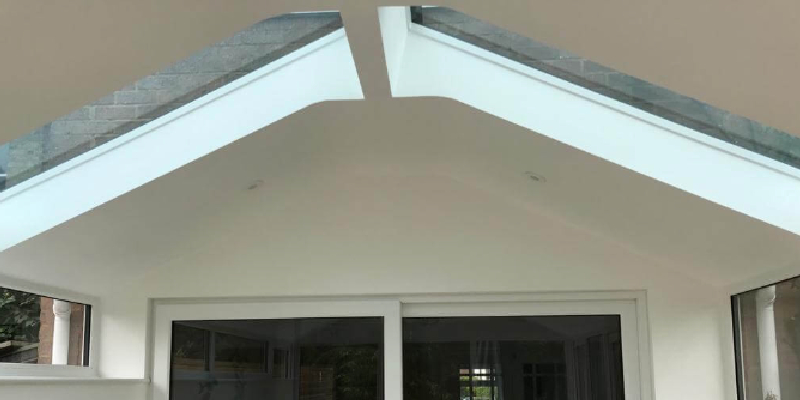
Create The Perfect Space For Your Family!
A conservatory is most definitely a worthwhile investment, whether you are replacing your existing space with a modernised design or building from scratch. There are endless opportunities on not only how you can use your new room but also how you can customise the design to fit your requirements. Every aspect can incorporate a touch of personality to create the perfect space for your family to enjoy for many years to come!
If you are considering adding a conservatory to your home, our team have spent more than 20 years specialising in conservatories in Aylesbury and the local surrounding areas. Please don’t hesitate to contact us today to discuss your options with a knowledgeable member of our team. We look forward to hearing from you!


